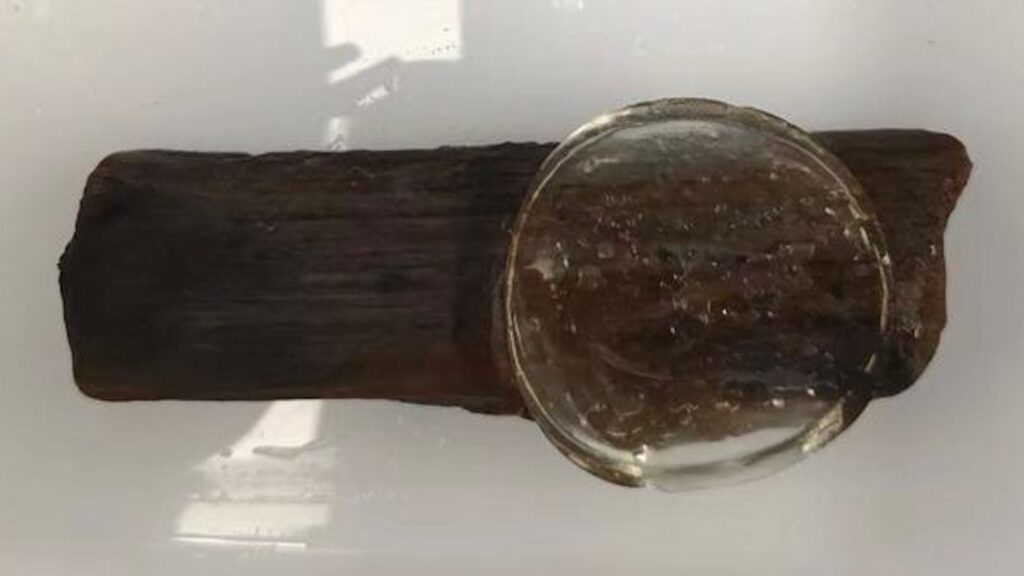[ad_1]
The ocean is an unforgiving environment for any shipwreck, but sunken wooden vessels are particularly susceptible to saltwater’s corrosive effects and high bacterial content. The dangers of deterioration don’t end when the archeological remains are recovered, either: preservation methods such as freeze- or replacement-drying can make artifacts more brittle, warp their overall shape, and take months to complete. But a new hydrogel developed by researchers in China may offer a much safer option for eradicating harmful microbes and acids in waterlogged shipwreck wood.
The novel material, detailed in a study published in ACS Sustainable Chemistry & Engineering, is the result of a collaboration between multiple Chinese institutions, including Sun-Yat Sen University and the Hong Kong University of Science and Technology. Experts already use certain hydrogels in similar artifact recovery projects, but they must peel the coating away after it infuses the wood with curing compounds—a potentially damaging procedure in itself. The new substance, however, safely dissolves after a few days without the need for direct physical removal.
To make their material, researchers combined precise amounts of acid-neutralizing potassium bicarbonate with antimicrobial, polymer-binding silver nitrates. The substance also relied on sodium alginate, a naturally occurring polysaccharide created from brown seaweed that is often used as a thickening agent by the food, cosmetic, and pharmaceutical industries. Once mixed together, the team then tested the hydrogel’s abilities in a proof-of-concept using an actual shipwreck’s wood. In this case, the samples came from an 800-year-old sunk vessel provided by the Maritime Silk Road Museum of Guangdong.
Reachers then analyzed preservation capabilities after applying multiple versions of the hydrogel coating to the saltwater-laden wood chunks. According to a December 3rd announcement, each hydrogel mixture neutralized acids up to 1 centimeter deep within 10 days of application. Hydrogels containing less silver nitrate, however, began removing harmful chemicals after just one day. Similarly, less silver nitrate gels fully liquified after 3-5 days, while more silver nitrate makes a coating remain a “gooey solid,” according to the study’s announcement. Across the board, hydrogel-treated wood was ultimately less brittle than samples treated using more solid gels.
[Related: A hunk of coal from the Titanic could fetch $780 at auction.]
“… [T]he hydrogel system incorporating [silver nitrates] demonstrates notable preservation effects on wooden cultural relics, regarding solubility, stretchability, and antibacterial properties,” researchers write in their study’s conclusion, adding that they hope the new material can “provide a timely and multipurpose solution for preserving wooden cultural heritage.”
[ad_2]
Source link


